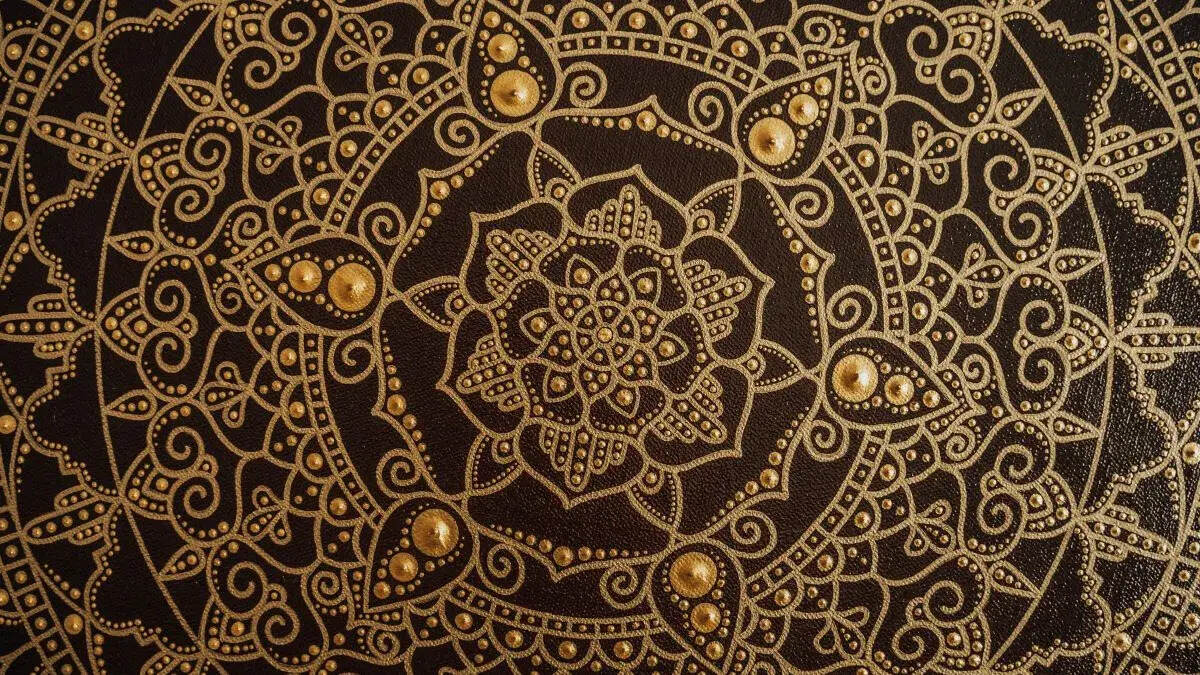
Intricate designs captivate our imagination and challenge our creativity. From ancient architecture to modern art, these detailed patterns tell stories, convey emotions, and showcase craftsmanship. Why are intricate designs so mesmerizing? They engage our brains, making us appreciate the skill and time invested in creating them. Whether found in nature, like the veins of a leaf, or in human-made objects, such as mosaics and textiles, intricate designs connect us to history and culture. They also inspire innovation in fields like fashion, technology, and interior design. Let's dive into 34 fascinating facts about these complex patterns and their impact on our world.
Key Takeaways:
- Intricate designs, from mandalas to snowflakes, showcase the beauty of complexity in art and nature. They hold cultural significance and are rooted in scientific principles, captivating and inspiring us all.
- Whether in ancient temples or modern technology, intricate designs tell stories and represent identities. They are not just limited to art and nature, but also found in everyday objects and activities, enriching our lives with their beauty and complexity.
The Beauty of Intricate Designs
Intricate designs captivate us with their complexity and detail. From ancient architecture to modern art, these designs tell stories and showcase craftsmanship. Let's dive into some fascinating facts about intricate designs.
-
Mandala Art: Originating from Hindu and Buddhist cultures, mandalas are geometric designs symbolizing the universe. Each pattern holds spiritual significance.
-
Celtic Knots: These endless loops represent eternity and interconnectedness. Found in ancient manuscripts and stone carvings, they remain popular in modern tattoos and jewelry.
-
Islamic Geometric Patterns: Islamic art avoids depicting living beings, focusing instead on complex geometric patterns. These designs often adorn mosques and palaces.
-
Baroque Architecture: Known for its grandeur and detail, Baroque architecture features intricate carvings, dramatic contrasts, and elaborate decorations.
-
Filigree Jewelry: This delicate metalwork involves twisting and curling thin wires to create lace-like designs. Popular in various cultures, it showcases exceptional craftsmanship.
Intricate Designs in Nature
Nature itself is a master of intricate designs. From the smallest organisms to vast landscapes, complexity and beauty abound.
-
Snowflakes: Each snowflake has a unique, intricate pattern formed by the way water molecules freeze. No two are alike.
-
Spider Webs: Spiders weave complex webs to catch prey. These designs are both functional and beautiful.
-
Butterfly Wings: The patterns on butterfly wings serve as camouflage, warning signals, or mating displays. Each species has distinct designs.
-
Leaf Veins: The vein patterns in leaves help transport water and nutrients. These natural designs are often symmetrical and highly detailed.
-
Coral Reefs: Coral polyps build intricate structures that form reefs. These underwater ecosystems are teeming with life and color.
Historical Intricate Designs
Throughout history, humans have created intricate designs in various forms, leaving behind a legacy of art and architecture.
-
Mayan Temples: The Mayans built temples with detailed carvings and hieroglyphics. These structures tell stories of their gods and rulers.
-
Gothic Cathedrals: Gothic architecture features pointed arches, ribbed vaults, and flying buttresses. The intricate stonework and stained glass windows are awe-inspiring.
-
Renaissance Art: Artists like Leonardo da Vinci and Michelangelo created detailed paintings and sculptures. Their work showcases human anatomy and emotion.
-
Chinese Porcelain: Ancient Chinese artisans crafted porcelain with intricate designs. These pieces often featured dragons, flowers, and landscapes.
-
Persian Rugs: Persian rugs are known for their detailed patterns and vibrant colors. Each rug tells a story and can take years to complete.
Modern Intricate Designs
Modern technology and creativity have given rise to new forms of intricate designs. These contemporary works continue to amaze and inspire.
-
3D Printing: 3D printers can create complex designs with precision. This technology is used in various fields, from medicine to fashion.
-
Digital Art: Artists use software to create detailed digital paintings and animations. These works can be incredibly intricate and lifelike.
-
Tattoo Art: Modern tattoo artists create intricate designs on skin. These tattoos can be highly detailed and personalized.
-
Fashion Design: Designers create elaborate clothing with intricate patterns and embellishments. Haute couture often features detailed embroidery and beadwork.
-
Architectural Models: Architects use models to plan buildings. These models can be incredibly detailed, showcasing every aspect of the design.
Cultural Significance of Intricate Designs
Intricate designs often hold cultural significance, representing beliefs, traditions, and identities.
-
Henna Art: Henna designs are used in various cultures for celebrations. These temporary tattoos feature intricate patterns and symbols.
-
Maori Tattoos: Maori tattoos, or ta moko, are traditional designs that tell a person's story. Each pattern has specific meanings.
-
African Masks: African masks often feature detailed carvings and patterns. These masks are used in rituals and ceremonies.
-
Native American Beadwork: Native American artisans create intricate beadwork for clothing and accessories. Each design has cultural significance.
-
Japanese Kimonos: Traditional kimonos feature detailed patterns and embroidery. These designs often depict nature and seasonal themes.
The Science Behind Intricate Designs
Science helps us understand the complexity and formation of intricate designs, revealing the underlying principles.
-
Fractals: Fractals are complex patterns that repeat at different scales. Found in nature and mathematics, they help explain the structure of various phenomena.
-
Symmetry: Symmetry plays a crucial role in the beauty of intricate designs. It is found in nature, art, and architecture.
-
Golden Ratio: The golden ratio is a mathematical ratio found in many intricate designs. It is believed to create aesthetically pleasing proportions.
-
Tessellations: Tessellations are patterns made of shapes that fit together without gaps. These designs are found in art, architecture, and nature.
-
Crystallography: The study of crystals reveals their intricate structures. Crystals form repeating patterns at the atomic level.
Intricate Designs in Everyday Life
Intricate designs are not limited to art and nature; they are also found in everyday objects and activities.
-
Embroidery: Embroidery involves stitching detailed patterns onto fabric. This craft is practiced worldwide, with each culture having unique styles.
-
Origami: Origami is the art of paper folding. Complex designs can be created from a single sheet of paper.
-
Lace Making: Lace making involves creating intricate patterns with threads. This delicate craft has been practiced for centuries.
-
Puzzle Design: Puzzles often feature intricate designs that challenge the mind. These can range from jigsaw puzzles to complex brainteasers.
The Final Brushstroke
Intricate designs captivate us with their complexity and beauty. From ancient architecture to modern art, these patterns tell stories, reflect cultures, and showcase human creativity. They’re not just pretty to look at; they serve practical purposes too, like in engineering and technology. Understanding these designs can deepen our appreciation for the world around us and inspire our own creativity. Whether it’s the detailed carvings on a historic building or the complex algorithms in computer graphics, intricate designs are everywhere. Next time you see a detailed pattern, take a moment to appreciate the skill and thought behind it. It’s a reminder of the incredible things humans can create when they pay attention to detail. So, keep your eyes open and let these designs inspire you in your own creative endeavors.
Frequently Asked Questions
Was this page helpful?
Our commitment to delivering trustworthy and engaging content is at the heart of what we do. Each fact on our site is contributed by real users like you, bringing a wealth of diverse insights and information. To ensure the highest standards of accuracy and reliability, our dedicated editors meticulously review each submission. This process guarantees that the facts we share are not only fascinating but also credible. Trust in our commitment to quality and authenticity as you explore and learn with us.


